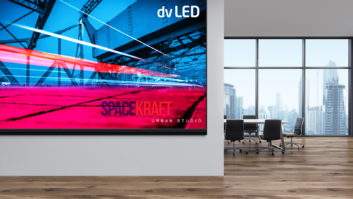
An understanding of content and networking skills are among the prerequisites for an integrator to enter the digital signage market, says Ian McMurray.
There seems to be a consensus in the industry that integrators should avoid just deciding to be a player in the digital signage market. They should avoid spreading resources too thinly, and focus on areas of expertise.
“Being successful across all markets is challenging since every setting brings its unique set of application requirements, end-user considerations, and objectives for success that can both stretch integrator resources and diminish the quality of deliverables,” says Maria Porco of X2O Media (pictured). “For instance, a particular market could use digital signage as a method for informing onlookers while a different channel could use the technology to increase sales to customers. These are two very different applications requiring the implementation of very different ecosystems.”
Colin Etchells, group technical manager at UK integrator Saville, raises perhaps the most significant difference between the boardroom market, for example, and the digital signage market.
“The key factor in all digital signage systems is content,” he points out. “No matter how intuitive or how flexible a system is, if the content is not right then it will ultimately fail as a solution.
“The big challenge for an integrator thinking of entering the digital signage market is to understand the power of content,” he continues. “He needs to thoroughly research the client’s needs and expectations of the proposed system, match that to the correct hardware/software solution and ensure that this will not compromise the content.”
And as Porco implies, content is somewhat outside the comfort zone of most integrators.
“While integrators rightly pay plenty of attention to display screens, software, mounting gear, networking, internet access and other physical components required to get networks up and running, the key to today’s successful deployments rests in the ability to deliver dynamic content across the network,” she says. “In other words, integrators need to understand the project’s objectives from a content perspective.”
Where the boardroom market and digital signage markets are similar is in the area of integrating in the end user’s IT network. That too can be a challenge, a point made by Graham Kirkpatrick, technical sales manager and digital signage specialist at UK integrator Reflex.
“Any integrator worth his salt should, as a minimum, be able to offer IT network, hardware and software skills,” he affirms. “Integrators need the ability to understand customers’ networks and systems, as well as any restrictions in place, before the deployment. Developing the understanding of how IT and AV networks converge, and how a digital signage system sits within it, may well create a need for staff education.”
“The ability to talk to IT and network systems professionals at their level is a given,” echoes Etchells. “Clients are very protective about their networks and this can make design and installation nearly impossible if the integrator cannot communicate at the right level with the right stakeholders. Industry accreditations and training qualifications are a must for integrators who want to be taken seriously.”







